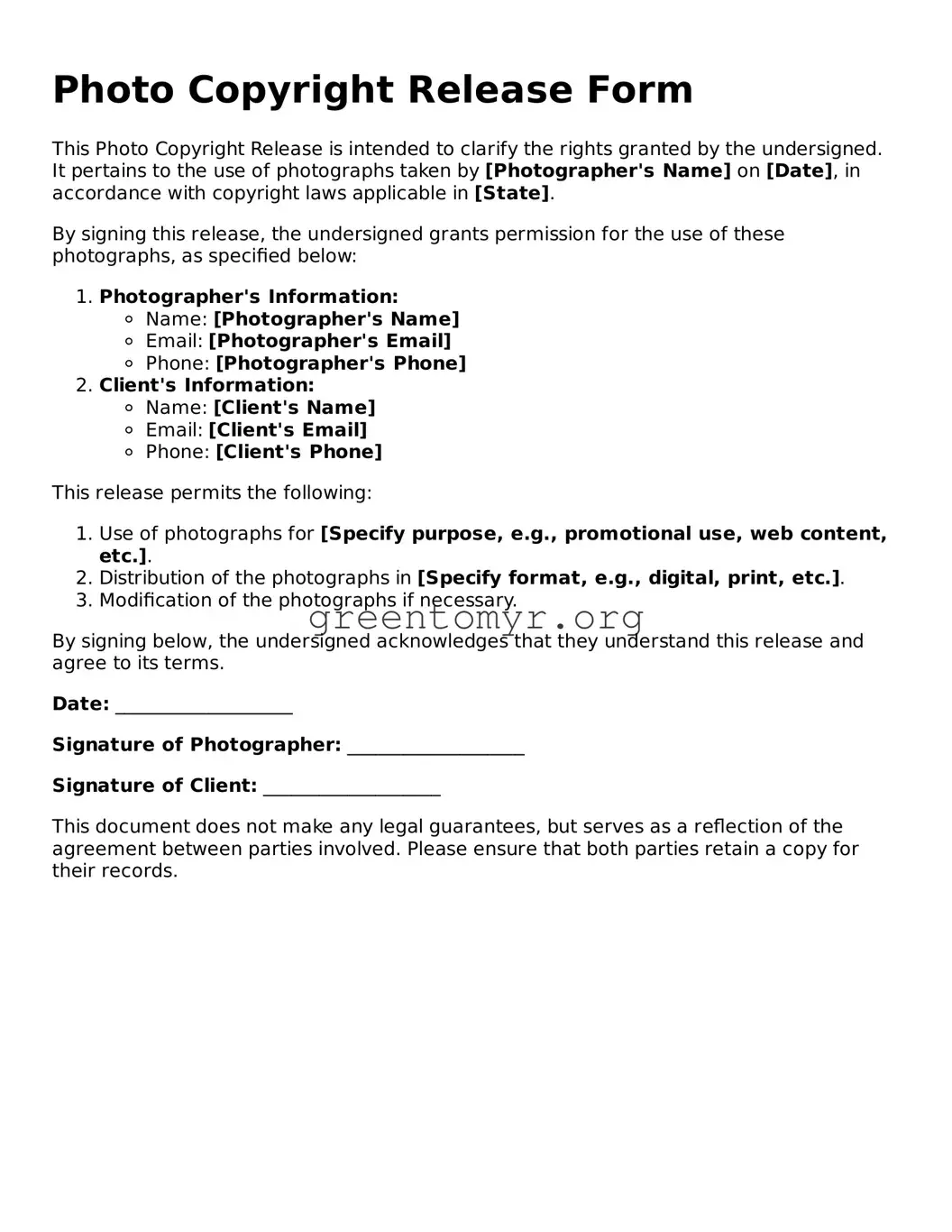Photo Copyright Release Form
This Photo Copyright Release is intended to clarify the rights granted by the undersigned. It pertains to the use of photographs taken by [Photographer's Name] on [Date], in accordance with copyright laws applicable in [State].
By signing this release, the undersigned grants permission for the use of these photographs, as specified below:
- Photographer's Information:
- Name: [Photographer's Name]
- Email: [Photographer's Email]
- Phone: [Photographer's Phone]
- Client's Information:
- Name: [Client's Name]
- Email: [Client's Email]
- Phone: [Client's Phone]
This release permits the following:
- Use of photographs for [Specify purpose, e.g., promotional use, web content, etc.].
- Distribution of the photographs in [Specify format, e.g., digital, print, etc.].
- Modification of the photographs if necessary.
By signing below, the undersigned acknowledges that they understand this release and agree to its terms.
Date: ___________________
Signature of Photographer: ___________________
Signature of Client: ___________________
This document does not make any legal guarantees, but serves as a reflection of the agreement between parties involved. Please ensure that both parties retain a copy for their records.
